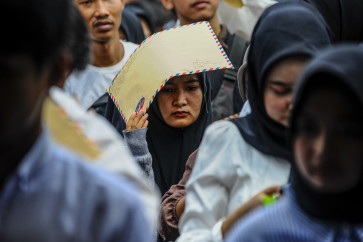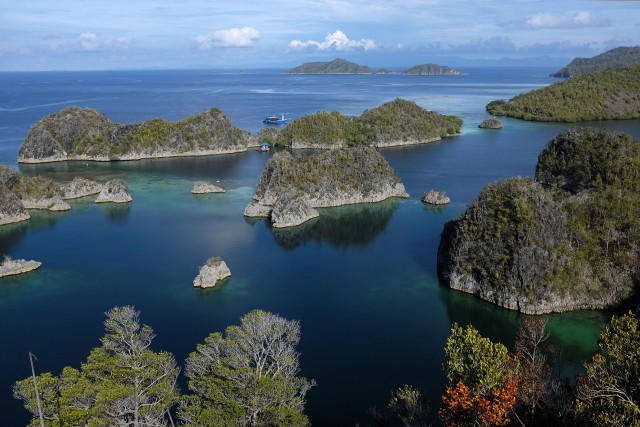The history of an Indonesian architect
Try to ask an Indonesian if he or she knows the House of Representatives (DPR) or the People’s Consultative Assembly (MPR) building
Change text size
Gift Premium Articles
to Anyone

T
ry to ask an Indonesian if he or she knows the House of Representatives (DPR) or the People’s Consultative Assembly (MPR) building. Many people will remember the turtle-like construction and say yes as an answer.
But try to ask them if they know who designed the building. Only a few people know the person.
The name of the architect is Soejoedi (1928-1981). He also designed several other buildings such as the ASEAN secretariat, the French Embassy, and the Transportation and Agriculture ministries. They are not less monumental.
His other designs are not known because there are only a few documents about his creations. He rarely spoke in public during his life and chose to speak in his own way: through designs.
However, those who want to know more about the architect can now learn from a book titled Membuka Selubung Cakrawala Arsitek Soejoedi (Unveiling Soejoedi’s Horizon). The book is pu-blished by GubahLaras, a company that Soejoedi and his friends founded four decades ago.
The book was written by Budi A. Sukada, also an architect. To analyze Soejoedi’s designs, Budi uses Charles Jencks’s viewpoint about architecture’s historical period.
The first one is an architectural work bringing influences on a certain period. The second one is architectural work that sticks to the architect’s personality and periodically gets renewed.
As the framework, Budi uses Imre Lakatos’ Methodology of Scientific Research Program (MSRP), an interesting take because MSRP has never been applied on the study of architecture.
The use of the viewpoint and the
method produce a comprehensive approach on Soejoedi’s work. It forces Budi the writer, to understand why and how Soejoedi created his designs in the way shown in the book.
In the introduction, Budi put Soejoedi’s life journey in a small history given the fact that the architect’s effective time was only 20 years.
The interesting part, perhaps, is Soejoedi’s biography. The writer presents his biography in a way that it follows the theme of his architectural designs. Readers can read stories about Soejoedi’s life, which is seldom discussed in mass media or written in other books.
Soejoedi’s proficiency, said Budi, basically relied on his sensitivity to the condition of the land. His choice in mass arrangement to construct a building was responsive, prudence, comprehensive and proportional. In his blueprint, there are differences between residential and public buildings.
For the one-story residential building, Soejoedi normally built its entrance facing its side garden. Meanwhile, for
the two-story residential building, Soejoedi always pulled back the first floor, giving the impression that the second floor is floating without pillars.
Soejoedi usually designed public buildings following the shape of the “Y” character. These patterns are clearly shown in the Jakarta Forestry Center and the Agriculture Ministry buildings. Other buildings that he designed use the cubical shape in a zigzag formation such as the ASEAN Secretariat building.
Many photos and designs of buildings in the book will make the readers enjoy the book. Not only does the book display pictures of Soejoedi’s designs and buildings, it also exposes thumbnails of buildings from Europe and America.
Those architectural designs are presented to show what kind of designs influenced Soejoedi. They also serve as a comparison to Soejoedi’s works.
The book has a fundamental weakness as it presents unclear information on page 44. Budi described Soejoedi’s kunstwollen (aesthetical stimulus) by quoting a document in the DPR/MPR building. But, he doesn’t tell the readers about the writer of the document and when it was recorded. Readers can’t decide if the data is relevant or not.
The variety of diction in the book is quite “heavy” for general readers. Budi uses many architectural terms
that are hard to understand. Also, Budi wrote the book with an academic writing style, presenting the book more as a dissertation.
This book only suits professional architects and architecture students, or people who have a keen interest in architecture. In the end, this book gives birth to another discourse.
THE WRITER IS AN INTERN AT THE JAKARTA POST
Membuka Selubung Cakrawala Arsitek Soejoedi
(Unveiling Soejoedi’s Horizon)
Budi A. Sukanda
GubahLaras, Architect & Planning, 2011
237 pages









